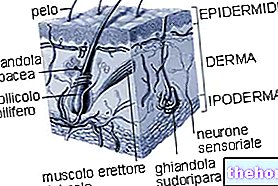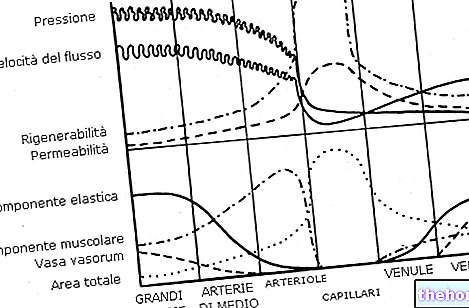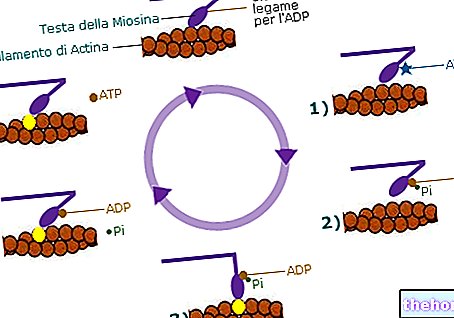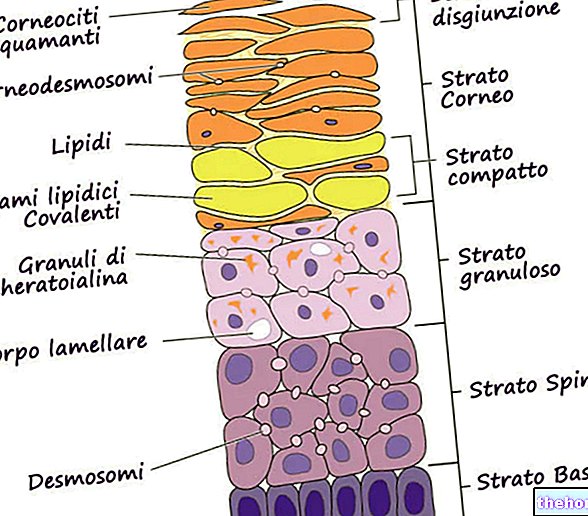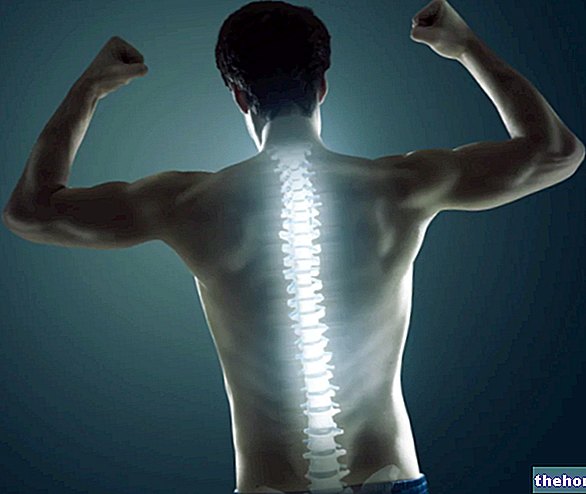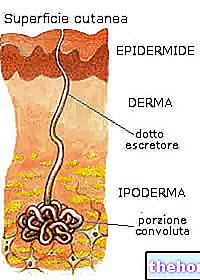Anatomy of the skeletal muscle
Skeletal muscle is made up of a collection of rather long, cylindrical cells with spindle-shaped ends, called muscle fibers. If it is cut transversely, it is noted that these fibers are not isolated, but grouped in bundles and wrapped in connective tissue. Elastic fibers, nerves and blood vessels run between one fascicle and the other, which branch out to distribute themselves to the various cells; the rich vascularization determines the typical coloration of skeletal muscle (thanks to the myoglobline that circulates in the blood).
While the fleshy parts (muscular bellies) have a more or less intense red color, the tendon parts they have a pearly complexion.
The muscles are richly vascularized and innervated, and the course of the vessels and nerves is characteristic, always oblique and wavy to withstand the continuous changes in length that each muscle undergoes during operation.
Muscle fibers are the largest cells in the organism, even if their dimensions are quite variable: from 10 to 100 µm as regards the diameter and between a millimeter and 20 centimeters as regards the length. It is estimated that the body human contains about 250 million muscle fibers.
Muscle cells can hyperphilize, then increase in size, but cannot normally multiply. In other words, it is not possible to increase the number of fibers through training, but only the overall volume of those already existing.
In summary: each muscle is formed by the union of several muscle bundles (or fragments); each bundle contains several fibers with a parallel course.
The size of the fascicles reflects the function of the muscle under examination; for example, the muscles responsible for fine, tightly controlled movements have small fascicles and a relatively larger proportion of Perimysium (see below).
The entire muscle mass is covered by a sheath of fibro-elastic connective tissue called epimysium, which has the task of containing and protecting it during the execution of the movement itself. This sheath enters the muscle belly to form the perimysium and the endomysium: thus, each bundle is covered by a loose connective membrane called perimysium, while each single muscle cell is covered by a delicate connective membrane called endomysium.
- Epimysium or Muscle fascia: sheath that covers the entire muscle
- Perimysium: sheath that covers the bundles of muscle fibers
- Endomysium: sheath that lines single muscle cells or fibers
In the connective tissue interposed between the muscle fibers, blood vessels and motor and sensory nerve fibers run. Large vessels and nerves penetrate through the epimysium and divide to branch out through the muscle, into the perimysium and into the endomysium, reaching every single fiber.

Anatomy of the muscle fibers
When it comes to muscles it is necessary to introduce specific terminology. We have already seen how the cells that compose them are called fibers; the table shows the other terms to which we will refer later in the article.
The prefix sarc comes from sarkos = meat.
Like the other cells of the organism, the muscle fibers are surrounded by a plasma membrane, called sarcolemma; similarly, in analogy to the intracellular cytoplasm, this membrane encloses the sarcoplasm.
Inside the muscle cell we first notice numerous nuclei. Each muscle fiber, in fact, derives from the union, during embryonic development, of multiple cells, called myoblasts, which fuse together. Therefore, the muscle fiber is a syncytium (term that belongs to multinucleated cells resulting from the fusion of several cells).
The nuclei of the muscle fibers are elongated, arranged near the sarcolemma and particularly numerous, up to several hundreds for each. All this, with the aim of supporting the protein synthesis responsible, among other things, for the production of new contractile proteins (actin and myosin) to renew the worn ones.
Continuing our journey inside the muscle cell, we notice that it is extraordinarily rich in voluminous mitochondria, arranged in parallel rows between the contractile elements; and it could not be otherwise. These organelles, in fact, are responsible for the production of energy (ATP ) required for muscle contraction.
Also in the cytoplasm, the presence of scattered granules of glycogen (an energetic reserve substrate), lipid droplets and myoglobin (a metalloprotein responsible for transporting and storing oxygen) should be noted.
The sarcoplasm (i.e. the cytoplasm enclosed by the sarcolemma) is mainly occupied by:
- MITOCHONDRI (energy production)
- LIPID DROPS (energy reserve)
- GLYCOGEN GRANULES (energy reserve)
- MYGLOBIN (oxygen reserve)
- myofibrils and sarcoplasmic reticulum (illustrated in the next article)
Large and numerous mitochondria, glycogen granules and the presence of myoglobin ... a clear sign of the intense metabolic activity that occurs inside the muscle, with the aim of providing energy for contraction.
Other articles on "Anatomy of skeletal muscle and muscle fibers"
- Muscles with parallel bundles and pinnate muscles
- muscles of the human body
- Skeletal muscle
- Muscles classification
- myofibrils and sarcomeres
- actin myosin
- muscle contraction
- muscle innervation
- neuromuscular plaque

